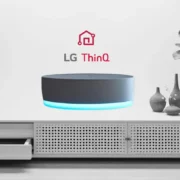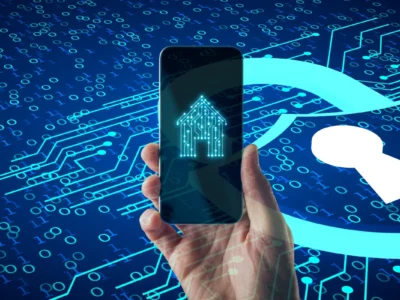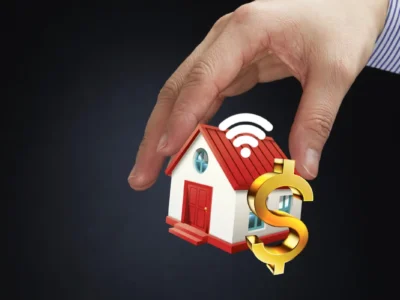Table of Contents
Introduction
The concept of a smart home has gained immense popularity in recent years due to technological advancements and growing environmental concerns. But one question remains: How much money can you save switching to a smart home? In this comprehensive blog post, we will explore various components of a smart home, potential savings across different regions, and provide tips on calculating your own savings.
Understanding the Components of a Smart Home
A smart home consists of interconnected devices that work harmoniously to improve convenience, enhance security, and reduce energy consumption. Here’s a closer look at some of the core components and how they can contribute to significant savings:
Smart Thermostats
Smart thermostats like the Nest Learning Thermostat and Ecobee are designed to optimize heating and cooling. They learn your schedule and preferences while providing remote control through a smartphone app.
Savings Potential:
- USA: Up to $180 annually according to the U.S. Environmental Protection Agency.
- Europe: Approximately €150-€200 per year in heating bills.
Smart Lighting
LED smart bulbs and lighting systems, such as Philips Hue, enable remote control and customization of lighting. Automated schedules and occupancy sensors further reduce energy wastage.
Savings Potential:
- USA: Switching to LED smart bulbs could save an average household up to $75 annually.
- Europe: An estimated €60-€80 per year for a typical household.
Smart Plugs and Outlets
Smart plugs and outlets can transform regular devices into energy-efficient gadgets by allowing remote control and scheduling. They also provide energy usage insights.
Savings Potential:
- USA: Up to $100 annually by eliminating phantom loads.
- Europe: Potential annual savings of €70-€100.
Smart Security Systems
Smart security systems offer more than just peace of mind. By preventing potential break-ins and optimizing insurance costs, they can result in significant savings.
Savings Potential: Annual savings of up to 20% on home insurance premiums.
Smart Appliances
Smart appliances, such as refrigerators, washing machines, and dishwashers, are designed to be energy efficient. Features like scheduling and remote control maximize these efficiencies.
Savings Potential: Approximately 10-30% reduction in energy consumption per appliance.
Potential Savings in Different Regions
The financial benefits of switching to a smart home can vary significantly across regions due to differences in energy costs, governmental incentives, and living standards.
United States
In the United States, the average household energy bill stands at around $1,500 annually. Switching to a smart home can reduce energy consumption by 10-30%, leading to substantial savings.
Estimated Annual Savings Breakdown:
- Smart Thermostat: Up to $180
- Smart Lighting: $50-$75
- Smart Plugs and Outlets: $50-$100
- Smart Appliances: 10-30% reduction in energy costs per appliance
Total Estimated Savings: $250-$500 annually per household.
Europe
In Europe, energy prices are relatively high, making smart home investments even more appealing. Governments also offer incentives for energy-efficient upgrades.
Estimated Annual Savings Breakdown:
- Smart Thermostat: €150-€200
- Smart Lighting: €60-€80
- Smart Plugs and Outlets: €70-€100
- Smart Appliances: 10-30% reduction per appliance
Total Estimated Savings: €280-€400 annually per household.
Australia
Australia faces rising energy costs, and households are increasingly adopting smart home technologies to cut down on electricity bills.
Estimated Annual Savings Breakdown:
- Smart Thermostat: AUD 150-200
- Smart Lighting: AUD 100-150
- Smart Plugs and Outlets: AUD 60-100
- Smart Appliances: 10-30% reduction per appliance
Total Estimated Savings: AUD 350-450 annually per household.
Middle East
With high temperatures and extensive use of air conditioning, the Middle East can significantly benefit from smart home technology, particularly smart thermostats and lighting.
Estimated Annual Savings Breakdown:
- Smart Thermostat: $100-$150
- Smart Lighting: $50-$100
- Smart Plugs and Outlets: $40-$70
- Smart Appliances: 10-30% reduction per appliance
Total Estimated Savings: $200-$350 annually per household.
India
The smart home market is growing rapidly in India, with increasing adoption driven by rising incomes and awareness. However, energy costs are relatively low compared to other regions.
Estimated Annual Savings Breakdown:
- Smart Thermostat: ₹1,000-₹1,500
- Smart Lighting: ₹600-₹1,000
- Smart Plugs and Outlets: ₹500-₹800
- Smart Appliances: 10-30% reduction per appliance
Total Estimated Savings: ₹2,500-₹5,000 annually per household.
China
China, the world’s largest smart home market, sees a diverse range of products at varying price points. Government incentives further boost energy-efficient upgrades.
Estimated Annual Savings Breakdown:
- Smart Thermostat: ¥600-¥1,000
- Smart Lighting: ¥300-¥500
- Smart Plugs and Outlets: ¥200-¥400
- Smart Appliances: 10-30% reduction per appliance
Total Estimated Savings: ¥1,100-¥2,500 annually per household.
Japan
In Japan, high electricity costs and an aging population make smart home technology particularly advantageous.
Estimated Annual Savings Breakdown:
- Smart Thermostat: ¥8,000-¥10,000
- Smart Lighting: ¥6,000-¥8,000
- Smart Plugs and Outlets: ¥5,000-¥7,000
- Smart Appliances: 10-30% reduction per appliance
Total Estimated Savings: ¥25,000-¥40,000 annually per household.
Calculating Your Potential Savings
To accurately estimate how much money you can save switching to a smart home, consider the following steps:
- Identify Key Energy Consumers: List high-energy-consuming devices in your home, such as HVAC systems, lighting, and large appliances.
- Assess Current Energy Consumption: Check past utility bills or use an energy consumption monitor to identify your current usage.
- Estimate Potential Savings: Utilize savings estimates mentioned in this article, specific to each smart device. Calculate potential reductions based on your current energy consumption.
- Factor in Installation Costs: While smart home devices can offer significant savings, upfront costs for devices and professional installation (if required) should be considered.
- Include Government Incentives: Research available government incentives, rebates, or subsidies to maximize your return on investment.
Conclusion
Switching to a smart home can lead to substantial financial savings, in addition to enhancing convenience and reducing environmental impact. While exact savings will vary depending on household size, location, and existing energy consumption, adopting smart technology could save households hundreds to thousands of dollars annually. The future of smart living holds immense potential, and by making informed decisions today, you can pave the way for a more efficient, cost-effective tomorrow.













Comments